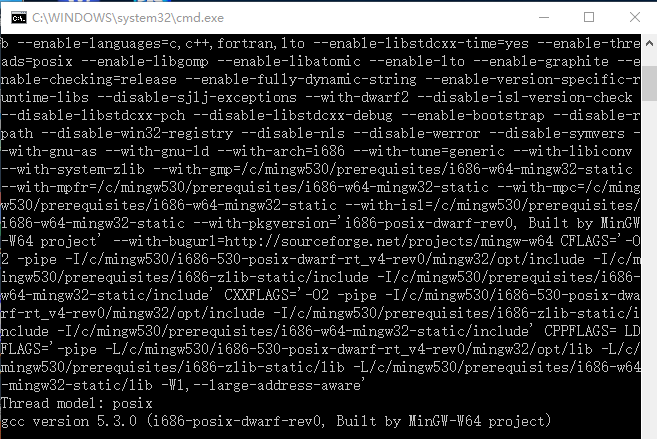?
jdbc java、1)??????? Spring是一個IOC(DI)和AOP容器框架。
1)??????? Spring的優良特性
???依賴注入:DI——Dependency Injection,反轉控制(IOC)最經典的實現。
? ?面向切面編程:Aspect Oriented Programming——AOP
?? 一站式:在IOC和AOP的基礎上可以整合各種企業應用的開源框架和優秀的第三方 ????類庫(實際上Spring 自身也提供了表述層的SpringMVC和持久層的Spring JDBC)。
?
?IOC(Inversion of Control):反轉控制
應用程序中的組件需要獲取資源時,傳統的方式是組件主動的從容器中獲取所需要的資源;
反轉控制的思想完全顛覆了應用程序組件獲取資源的傳統方式:反轉了資源的獲取方向——改由容器主動的將資源推送給需要的組件,開發人員不需要知道容器是如何創建資源對象的,只需要提供接收資源的方式即可
DI(Dependency Injection):依賴注入
IOC的另一種表述方式:即組件以一些預先定義好的方式(例如:setter 方法)接受來自于容器的資源注入。相對于IOC而言,這種表述更直接。
IOC 描述的是一種思想,而DI 是對IOC思想的具體實現.?
Bean配置解釋
???????? <bean>: 讓IOC容器管理一個具體的對象.
??????????????????????????? id:? 唯一標識
??????????????????????????? class: 類的全類名. 通過反射的方式創建對象.
???????????????????????????????????? ?? Class cls = Class.forName("com.atguigu.spring.helloWorld.Person");
???????????????????????????????????? ?? Object obj? = cls.newInstance(); 無參數構造器
??????????????????????????? <property>: 給對象的屬性賦值.
???????????????????????????????????? name: 指定屬性名 ,要去對應類中的set方法.
???????????????????????????????????? value:指定屬性值? ?
?
獲取Bean的方式
1) 從IOC容器中獲取bean時,除了通過id值獲取,還可以通過bean的類型獲取。但如果同一個類型的bean在XML文件中配置了多個,則獲取時會拋出異常,所以同一個類型的bean在容器中必須是唯一的。
//1.創建IOC容器ApplicationContext ioc = new ClassPathXmlApplicationContext("applicationContext.xml");//2.獲取HelloWorld對象;唯一標示的id為“Hi”HelloWorld bean = (HelloWorld) ioc.getBean("Hi"); 或者這種方式來獲取Bean:HelloWorld helloWorld = ioc.getBean(HelloWorld. class); 或者可以使用另外一個重載的方法,同時指定bean的id值和類型 HelloWorld helloWorld = cxt.getBean(“helloWorld”,HelloWorld. class); //3.調用HelloWorld中的方法bean.sayHello();
?
?
?
?
?給bean的屬性賦值(普通類型的值、引用類型的值)
<!-- 給bean的屬性賦值,(普通類型的值、引用類型的值)1.通過vlaue屬性或vlaue子標簽(了解) 2.通過ref屬性或ref子標簽(了解)--><bean id="employee" class="com.atguigu.spring.entities.Employee"><property name="id" value="1"></property><property name="lastName"><value>kk</value> 可使用<value>子標簽來賦值;</property><property name="email" value="kk@qq.com"> </property><property name="salary" value="10000"> </property><!-- <property name="deptId" value="2"> </property> --><property name="dept" ref="department"></property> 有引用數據類型的值 </bean>配置Department,再將配置好的Department注入到Employee中(使用ref)<bean id="department" class="com.atguigu.spring.entities.Department"><property name="id" value="2"></property><property name="name" value="設計"></property></bean>
引用外部屬性文件<!-- 方式一:直接配置數據源 --><bean id="dataSource" class="com.alibaba.druid.pool.DruidDataSource"><property name="username" value="root"></property><property name="password" value="123456"></property><property name="url" value="jdbc:mysql://localhost:3306/test"></property><property name="driverClassName" value="com.mysql.jdbc.Driver"></property></bean><!-- 方式二: 引入外部屬性文件以properties的格式 --><context:property-placeholder location="classpath:druid.properties"/><!-- 通過引入外部配置文件引入數據源 --><bean id="dataSource" class="com.alibaba.druid.pool.DruidDataSource"><property name="username" value="${jdbc.username}"></property><property name="password" value="${jdbc.password}"></property><property name="url" value="${jdbc.url}"></property><property name="driverClassName" value="${jdbc.driverClassName}"></property><property name="initialSize" value="${jdbc.initialSize}"></property><property name="minIdle" value="${jdbc.minIdle}"></property><property name="maxActive" value="${jdbc.maxActive}"></property><property name="maxWait" value="${jdbc.maxWait}"></property></bean> ?
創建properties屬性文件(位于src/main/resources);
在xml中引入context名稱空間;
指定properties屬性文件的位置;從properties屬性文件中引入屬性值
?
<!-- 指定properties屬性文件的位置 --> <!-- classpath:xxx 表示屬性文件位于類路徑下 --> <context:property-placeholder location="classpath:jdbc.properties"/>
?
?
?
基于注解配置Bean
?
1)? 手動裝配:以value或ref的方式明確指定屬性值都是手動裝配。
2)? 自動裝配:根據指定的裝配規則,不需要明確指定,Spring自動將匹配的屬性值注入bean中。
相對于XML方式而言,通過注解的方式配置bean更加簡潔和優雅,而且和MVC組件化開發的理念十分契合,是開發中常用的使用方式。
?
1) 普通組件:@Component
????????標識一個受Spring IOC容器管理的組件
2) 持久化層組件:@Repository
標識一個受Spring IOC容器管理的持久化層組件
3) 業務邏輯層組件:@Service
標識一個受Spring IOC容器管理的業務邏輯層組件
4)?表述層控制器組件:@Controller
標識一個受Spring IOC容器管理的表述層控制器組件
5) 組件命名規則
???????? ①默認情況:使用組件的簡單類名首字母小寫后得到的字符串作為bean的id
???????? ②使用組件注解的value屬性指定bean的id
???????? 注意:事實上Spring并沒有能力識別一個組件到底是不是它所標記的類型,即使將@Respository注解用在一個表述層控制器組件上面也不會產生任何錯誤,所以?????????????????????? @Respository、@Service、@Controller這幾個注解僅僅是為了讓開發人員自己明確當前的組件扮演的角色。
?
Spring Web MVC (SpringMVC)
Spring MVC 通過一套 MVC 注解,讓 POJO 成為處理請求的控制器,而無須實現任何接口
C(controler ,處理用戶請求的,與servlet功能是一樣的,請求先到達C層;)
M(model模型控制器(業務模型和數據模型))
V(View視圖,視圖解析器來渲染視圖)
請求到達C之后要去拿Model,它再返回給C數據,C再找View(數據以什么方式進行呈現給用戶),V處理完之后把頁面給C,最后它給用戶。
表現層(出來用戶請求的)、業務邏輯層(出來業務邏輯的)、持久化層(DAO連接數據庫)。
SpringMVC在這個基礎上又加了一個前端控制器(配置在web.xml中);它負責分配,讓哪個C去處理請求;
請求先到前端控制器它先攔截,由它來分配。
?
?)? 在web.xml中配置DispatcherServlet(前端控制器)
<?xml version="1.0" encoding="UTF-8"?>
<web-app xmlns:xsi="http://www.w3.org/2001/XMLSchema-instance"xmlns="http://java.sun.com/xml/ns/javaee"xsi:schemaLocation="http://java.sun.com/xml/ns/javaee http://java.sun.com/xml/ns/javaee/web-app_2_5.xsd"id="WebApp_ID" version="2.5"><!-- 配置前端控制器|核心控制器 DispatcherServlet --><servlet><servlet-name>springDispatcherServlet</servlet-name><servlet-class>org.springframework.web.servlet.DispatcherServlet</servlet-class><init-param><param-name>contextConfigLocation</param-name><param-value>classpath:springmvc.xml</param-value> 文件位置,服務器解析xml時來造這個對象,</init-param><load-on-startup>1</load-on-startup> 服務器一啟動就把對象造好了,不用發請求</servlet><!-- Map all requests to the DispatcherServlet for handling --><servlet-mapping><servlet-name>springDispatcherServlet</servlet-name><url-pattern>/</url-pattern> /是為了覆蓋tomcat服務器中的xml,為了替代default它攔截的請求(/它是除了jsp不攔截其他都攔截后交給它處理);</servlet-mapping> //替換它,替換它攔截的請求交給我處理; jsp有專門的jsp處理<!-- 通過過濾方式配置中文,后端顯示中文不會亂碼 --><filter><filter-name>CharacterEncodingFilter</filter-name><filter-class>org.springframework.web.filter.CharacterEncodingFilter</filter-class><init-param><param-name>encoding</param-name><param-value>UTF-8</param-value></init-param><init-param><param-name>forceEncoding</param-name><param-value>true</param-value></init-param></filter><filter-mapping><filter-name>CharacterEncodingFilter</filter-name><url-pattern>/*</url-pattern></filter-mapping></web-app> ?
<?xml version="1.0" encoding="UTF-8"?> <beans xmlns="http://www.springframework.org/schema/beans"xmlns:xsi="http://www.w3.org/2001/XMLSchema-instance"xmlns:context="http://www.springframework.org/schema/context"xmlns:mvc="http://www.springframework.org/schema/mvc"xsi:schemaLocation="http://www.springframework.org/schema/mvc http://www.springframework.org/schema/mvc/spring-mvc-4.0.xsdhttp://www.springframework.org/schema/beans http://www.springframework.org/schema/beans/spring-beans.xsdhttp://www.springframework.org/schema/context http://www.springframework.org/schema/context/spring-context-4.0.xsd"><!-- 設置自動掃描的包 --><context:component-scan base-package="com.atguigu.springmvc"></context:component-scan><!-- 配置視圖解析器來渲染視圖 --><bean id="viewResolver" class="org.springframework.web.servlet.view.InternalResourceViewResolver"> <!-- 配置前綴 --><property name="prefix" value="/WEB-INF/views/"></property> <!-- 配置后綴 --><property name="suffix" value=".jsp"></property></bean><!-- 處理靜態資源,如加載juqery等 --><mvc:default-servlet-handler/><!-- 配置了處理靜態資源之后,Handler中的@RequestMapping注解就失效了,此時必須配置以下標簽 --><mvc:annotation-driven></mvc:annotation-driven></beans>
前綴 + 返回值 + 后綴,拼接起來?/WEB-INF/views/success.jsp
創建處理器(讓當前類成為處理器,加@Controller注解)
?
index.jsp
<%@ page language="java" contentType="text/html; charset=UTF-8"pageEncoding="UTF-8"%>
<!DOCTYPE html PUBLIC "-//W3C//DTD HTML 4.01 Transitional//EN" "http://www.w3.org/TR/html4/loose.dtd">
<html>
<head>
<meta http-equiv="Content-Type" content="text/html; charset=UTF-8">
<title>Insert title here</title><script type="text/javascript" src="${pageContext.request.contextPath}/script/jquery-1.7.2.js"></script>
<script type="text/javascript">/* alert($); */
</script>
</head>
<body><a href="${pageContext.request.contextPath }/hello">Hello SpringMVC</a><br><a href="${pageContext.request.contextPath }/testValue">testValue</a><br><a href="${pageContext.request.contextPath }/testMethod">testMethod</a><form action="${pageContext.request.contextPath}/testMethod" method="post"><input type="submit" value="提交"></form><a href="${pageContext.request.contextPath}/testRequestParam?username=admin">test RequestParam</a><h2>測試入參POJO</h2><form action="${pageContext.request.contextPath }/testPOJO">員工編號:<input type="text" name="id"><br>員工姓名:<input type="text" name="lastName"><br>員工郵箱:<input type="text" name="email"><br>員工薪水:<input type="text" name="salary"><br>部門編號:<input type="text" name="dept.id"><br>部門名字:<input type="text" name="dept.name"><br><input type="submit" value="TestPOJO提交"></form><h3>測試入參為原生SevletAPI</h3><form action="${pageContext.request.contextPath}/testServletAPI" method="post">員工姓名:<input type="text" name="username"><input type="submit" value="TesetServletAPI"></form><!-- 轉發 --><a href="${pageContext.request.contextPath }/testModelAndView">ModelView</a><br><a href="${pageContext.request.contextPath }/testMap">Map</a><br><!-- 重定向 --><a href="${pageContext.request.contextPath }/testRedirect">Redirect</a>
</body>
</html> ?
@Controller
public class SpringMVCHandler {public static final String SUCCESS = "success";
/* @RequestMapping處理請求映射;注解中的屬性 * 1.value -用來設置要映射的請求地址-該屬性的類型是一個String類型的數組,如果映射的請求地址(必須攜帶請求參數params)只有一個那么大括號可以省略, 而且value屬性名也可以省略不寫 2.method-用來設置要映射的請求方式 -如果沒有指定改屬性如post,那么只看處理的請求地址,不管請求方式,不是默認出來get請求*///測試value@RequestMapping(value={"/testValue", "testValue2"})public String testValue() {System.out.println("測試value");return SUCCESS;}//測試method@RequestMapping(value="/testMethod" ) 可加請求參數params={"username=admin", "age=18"}public String testMethod() {System.out.println("測試method");return SUCCESS;/*點擊超鏈接是get請求*/}//測試post請求@RequestMapping(value= "/testMethod", method=RequestMethod.POST)public String testPost() {System.out.println("測試post");return SUCCESS;}/* @RequestParam注解 -用來映射請求參數,如果Handler方法的入參的參數名和請求參數的參數名一致,那么該注解可以不寫(不建議這樣)value屬性: -用來設置請求參數的參數名 required屬性: -用來設置該請求參數是否是必須的,默認是true,是必須的defaultValue屬性: -用來設置一個默認值,如果沒有攜帶該請求參數那么將使用此默認值*/@RequestMapping("/testRequestParam")public String testRequestParam(@RequestParam("username") String username, @RequestParam(value="age", required=false, defaultValue="0") int age) { //或者IntegerSystem.out.println("用戶名是:" + username);System.out.println("年齡是:" + age);return SUCCESS;}//Spring MVC 會按請求參數名和 POJO 屬性名進行自動匹配, 自動為該對象填充屬性值,支持級聯屬性@RequestMapping("/testPOJO")public String testPOJO(Employee employee) {System.out.println("員工信息為:" + employee);return SUCCESS;}/*SpringMVC 的 Handler 方法可以接受以下ServletAPI 類型的參數 1) ★HttpServletRequest 2)* ★HttpServletResponse
3) ★HttpSession */@RequestMapping("/testServletAPI")public String testSevletAPI(HttpServletRequest request, HttpServletResponse response) {String username = request.getParameter("username");System.out.println("用戶名是:" + username);return SUCCESS;}//處理響應數據方法一:將Handler的方法的返回值設置為ModelAndView@RequestMapping("/testModelAndView")public ModelAndView testModelAndView() {//①創建對象ModelAndView mv = new ModelAndView();Employee employee = new Employee(2, "嘿嘿", "hei@qq.com", 20000.3, null);//②添加數據模型mv.addObject("emp", employee);//③設置視圖名mv.setViewName("success");return mv;}//處理響應數據二:/*方法的返回值還是String類型,在Handler的方法入參中傳入Map、Model或ModelMap不管在Handler的方法中傳入Map、Model還是ModelMap,SpringMVC都會轉換為一個ModelAndView對象*/@RequestMapping("/testMap")public String testMap(Map<String, Object> map) {Employee employee = new Employee(1, "smile", "sl@126.com", 20000.01, null); map.put("emp", employee); //將模型數據放到map中,最終會放到request域中return SUCCESS;}//重定向@RequestMapping("/testRedirect")public String testRedict() {System.out.println("開始重定向");return "redirect:/redirect.jsp";}
} ?
?
Spring與SpringMVC需不需要整合?* 不整合* 1.將所有的配置都配置到SpringMVC的配置文件中* 2.將Spring的配置文件通過import標簽引入到SpringMVC的配置文件中* ★整合* Spring的配置文件中管理Service、Dao、數據源、事務以及與其他框架的整合* SpringMVC的配置文件管理Handler、視圖解析器、處理靜態資源等* 問題一:* IOC容器如何初始化?* Java工程:new ClassPathXmlApplicationContext("beans.xml");* Web工程:在web.xml文件中配置ContextLoaderListener這個監聽器* 問題二:* Handler和Service被創建了兩次?* 讓Spring不掃描Handler* 讓SpringMVC只掃描Handler
?
springmvc.xml
<!-- 組件掃描 --><!-- 子標簽context:include-filter:用來設置只掃描那個包下的類-要讓此標簽生效,必須將父標簽的use-default-filters的屬性值改為false --><context:component-scan base-package="com.atguigu.ss" use-default-filters="false"><context:include-filter type="annotation" expression="org.springframework.stereotype.Controller"/></context:component-scan><!-- 視圖解析器 --><bean class="org.springframework.web.servlet.view.InternalResourceViewResolver"><property name="prefix" value="/WEB-INF/views/"></property><property name="suffix" value=".jsp"></property></bean> ?
beans.xml
<!-- 設置自動掃描的包 --><context:component-scan base-package="com.atguigu.ss"><!-- 子標簽context:exclude-filter:用來設置不掃描那個包下的類如果type的值是annotation,那么expression的值是注解的全類名如果type的值是assignable,那么expression的值是接口或實現類的全類名 --><context:exclude-filter type="annotation" expression="org.springframework.stereotype.Controller"/></context:component-scan > web.xml
<!-- 前端控制器 --><servlet><servlet-name>springDispatcherServlet</servlet-name><servlet-class>org.springframework.web.servlet.DispatcherServlet</servlet-class><init-param><param-name>contextConfigLocation</param-name><param-value>classpath:springmvc.xml</param-value></init-param><load-on-startup>1</load-on-startup></servlet><!-- Map all requests to the DispatcherServlet for handling --><servlet-mapping><servlet-name>springDispatcherServlet</servlet-name><url-pattern>/</url-pattern></servlet-mapping><!-- 配置ContextLoaderListener監聽器; Web工程--><context-param><param-name>contextConfigLocation</param-name><param-value>classpath:beans.xml</param-value></context-param><!-- Bootstraps the root web application context before servlet initialization --><listener><listener-class>org.springframework.web.context.ContextLoaderListener</listener-class></listener>
?















